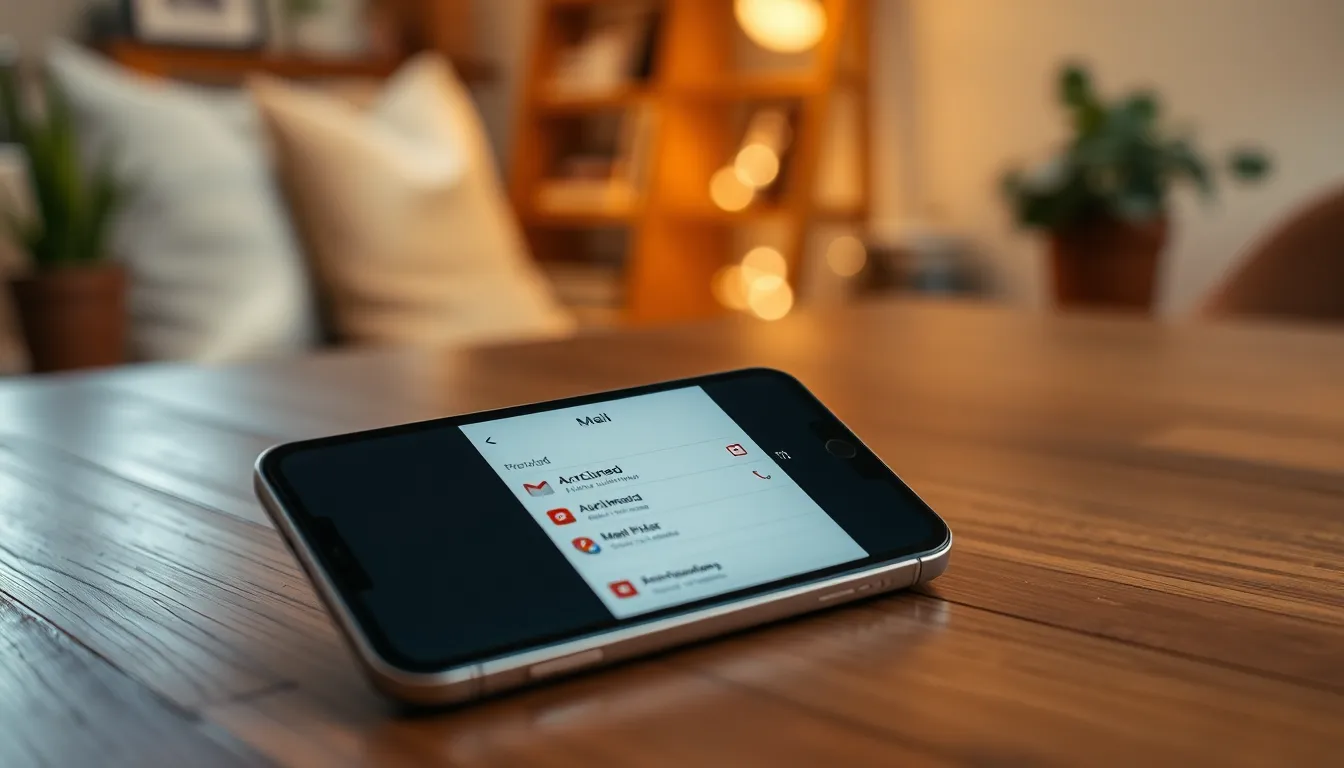Ever found yourself on an iPhone scavenger hunt, desperately searching for that elusive archive folder? You’re not alone. Many iPhone users feel like they’re on a wild goose chase when it comes to locating their archived emails or messages. It’s like trying to find a needle in a haystack—if the haystack was made of apps and notifications.
Table of Contents
ToggleUnderstanding The Archive Folder On iPhone
The archive folder on an iPhone serves as a storage location for emails or messages users prefer to keep without cluttering their inboxes. Access to archived items varies by application, primarily email and messaging apps.
In the Mail app, archived emails can typically be found in the “Mailboxes” section. Users can look for “Archived” among the listed options. Tapping this will reveal all messages users have archived, allowing for easy retrieval.
For messaging apps like Messages, archiving often means moving conversations out of sight. Although there isn’t a dedicated archive folder, users can hide conversations by swiping left and selecting “Hide Alerts” or disabling notifications. Archived messages within these apps aren’t permanently deleted; they remain accessible when users search for specific conversations.
In contrast, third-party applications may handle archived content differently. Some apps provide an explicit archive feature, while others may require users to navigate settings to find archived chats or documents. Checking the support pages of these applications offers clarity regarding archiving practices.
Locating the archive folder may require patience and familiarity with the respective app’s layout. Navigating through folders and options can seem overwhelming, but understanding where archived content resides enhances the user experience. Familiarity with these pathways ensures users can efficiently retrieve important information when needed.
Locating The Archive Folder

Finding the archive folder on an iPhone can simplify the process of retrieving important information. The location varies depending on the app used.
Mail App Archive
In the Mail app, users can locate archived emails within the “Mailboxes” section. Tapping on “Mailboxes” reveals several categories, including “All Mail” and “Archived.” Archived emails are stored here for easy access and won’t clutter the inbox. Users can also swipe left on an email to reveal the archive option, allowing for quick organization. Searches can be run from the mailbox view to find specific archived messages efficiently.
Messages App Archive
The Messages app does not feature a dedicated archive folder for conversations. Instead, it allows users to manage message visibility by swiping left on conversations and selecting “Hide Alerts.” This action keeps messages accessible without notifications. To find hidden conversations, users must enter the main Messages interface and conduct a search. Archived content remains findable, highlighting the importance of familiarizing oneself with app functionalities to streamline message management.
How To Access Archived Emails
Archived emails are easy to find with the right steps. Specific methods exist depending on the application used.
Using The Mail App
The Mail app provides a straightforward way to access archived emails. First, open the Mail app and navigate to the “Mailboxes” section. You’ll see a folder labeled “Archived.” Tapping this folder displays all archived messages. Users can also quickly archive emails by swiping left on any email and selecting “Archive.” This feature helps maintain a tidy inbox. Searching within the “Mailboxes” view allows users to find specific archived messages efficiently.
Using Third-Party Email Apps
For third-party email applications, the process may vary. Each app has its own method for accessing archived items. Popular options like Gmail and Outlook often include an “Archive” section in their menus. Users typically tap the menu icon to display various folders, including archived emails. Some apps allow swiping actions similar to the Mail app for archiving messages. If unsure about the steps, referring to the app’s help or support page provides additional guidance. Familiarity with the features enhances efficiency when managing emails.
Retrieving Archived Messages
Archived messages on an iPhone can be accessed with a few simple steps, depending on the messaging app in use. Understanding how to navigate these features enhances accessibility to important conversations.
For iMessages
Finding archived iMessages requires a slightly different approach. Users typically do not have a designated archive folder for iMessages. To manage message visibility, they can swipe left on conversations and select “Hide Alerts.” This keeps messages in view while minimizing notifications. To reveal hidden conversations, users must enter the main Messages interface and search for the contact or keywords within the conversation to locate specific archived messages.
For Other Messaging Apps
Accessing archived messages in other messaging apps varies based on the application. Apps like WhatsApp manage archived chats through an “Archived Chats” feature that users can find at the bottom of the chat list. Users must tap this section to reveal all archived conversations. In other third-party messaging apps, the archive locations often reside in the settings or menu. Users should consult the app’s help section for precise instructions on finding their archived content.
Locating the archive folder on an iPhone can significantly enhance the user experience. By understanding how different apps manage archived content users can avoid frustration and streamline their message management. Familiarity with the Mail app’s “Archived” section and the methods used in messaging apps allows for easier retrieval of important information.
Whether it’s accessing archived emails or managing hidden conversations users can maintain organization and efficiency. Embracing these functionalities not only simplifies navigation but also ensures that crucial messages are never lost in the shuffle. With a little practice users can confidently navigate their iPhones and make the most of their archived content.





